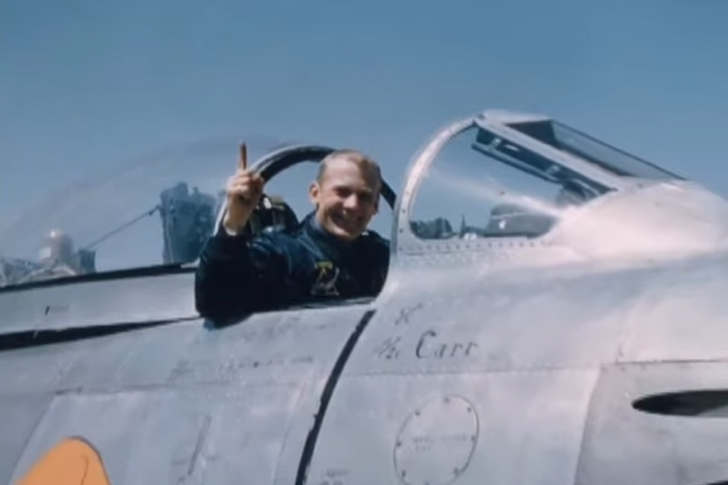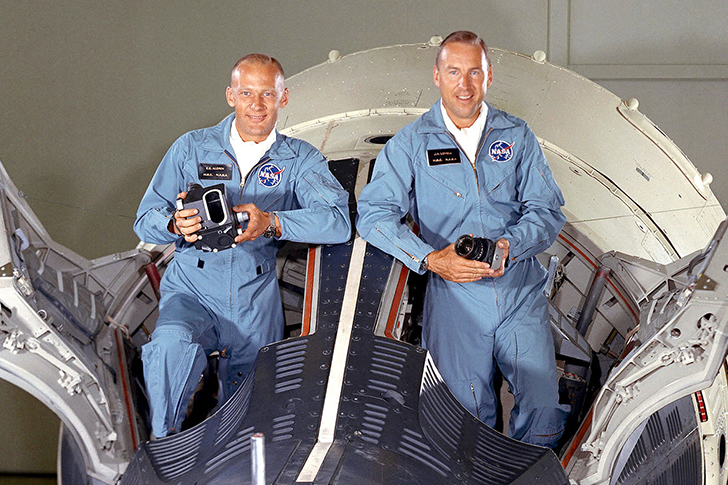What’s All the Buzz? Astronaut Aldrin’s Space Conquests

Given credit as the second man to walk on the moon’s surface, Buzz Aldrin certainly is certainly part of history. He was the pilot of the lunar module and this was to be his second and last spaceflight. The same was the case with Neil Armstrong and Michael Collins, who were equally experienced flyers. As the Lunar Excursion Module commander, Aldrin was primarily tasked with ensuring they land safely on the moon and fly away from it as scheduled.
Early Life and Career
Operating the LEM in a harsh, unfamiliar terrain was the ultimate test, but Aldrin did not come in unprepared. With a colorful and extensive military background, he was suited to weather the unfavorable conditions on the Moon’s surface. He is the son of a former US Air Force colonel and was himself a top student at West Point. When he joined as a fighter pilot during the Korean War, he became a decorated soldier. This served as his ticket to become a part of NASA’s budding space program.

His degree in astronautics, under the guidance of Richard Battin, was a great help towards achieving their overall goals at NASA. He pursued a doctorate after and was the first astronaut to receive a PhD. After the completion of his course, Aldrin was assigned to the Gemini Project and was involved in enhancing the capabilities of the Agena target vehicle.

Gemini 12
Aldrin could have been part of NASA’s Astronaut Group 2 but was rejected on the grounds that he was not a test pilot. When the rules changed to allow those with more than 1,000 jet hours, he qualified and was included in Group 3.
When Gemini 12 was first conceived, its objectives were unclear because a lot of the main goals were already done in previous missions. Following Aldrin’s success in doing the EVA, however, NASA wanted to replicate that success. The training curriculum was changed to an underwater exercise to allow astronauts to work in the slow, gas-absent and weightless environment in space. Previously, they had to fly a jet in a parabola to simulate weightlessness. They then defined Gemini 12’s objective as being able to perform docked maneuvers using gravity-gradient stabilization. Aldrin performed three EVAs under the Gemini program.

Apollo 11
This mission was special because it was composed of astronauts who had already flown into space, with all three crew members due for their second and last spaceflight. NASA made the necessary investments to send only the most capable men on the first journey to the satellite. Aldrin was responsible for calling out navigation data to Armstrong, whose primary resposiblity then was to pilot the Eagle.
One other unique fact about Apollo 11 was that Aldrin led a religious ceremony on the Moon while beaming down words from spaced, asking everyone to contemplate on what just happened. It was a momentous occasion, after all. He also performed a communion, but this was not broadcast anymore as NASA lawyers were kept busy by a lawsuit when a text from the scriptures were read from Apollo 8.
Shortly after landing, they began preparing for the moonwalk, and Aldrin was responsible for taking photographs just as Collins was. While the Command Module Pilot took images from inside the craft, Aldrin took most from outside. Armstrong was a bit disappointed because he was only seen in color in two pictures. Aldrin said that they really did not practice photo-taking during their simulations and was also surprised that Armstrong had very few photos. To their credit, both Aldrin and Collins took interesting images.
After his career at NASA, Aldrin decided to retire after 21 years and took a managerial job in the Air Force. He also wrote several books.’

The Buzz
One of those books he wrote was an autobiography, Return to Earth. Many were excited to read about the degree of exploits of the astronauts, but a few also wanted to know why the person born Edwin Eugene Aldrin Jr. was nicknamed “Buzz”. Apparently, her sister, Fay Ann could not pronounce the word brother, and buzzer came out instead. It was eventually shortened to Buzz.
With the passing of Michael Collins in 2021 and Neil Armstrong in 2012, Aldrin is now the only remaining crew member of the famed Apollo 11.
Photo Sources:
Cover – NASA / Wikipedia via Timeless.Fandom.com
Photo #1 – YouTube / therealBuzzAldrin
Photo #2 – NASA via Space.com
Photo #3 – NASA via New Mexico Museum of Space History
Photo #4 – YouTube via UPIVideo

Recent Comments